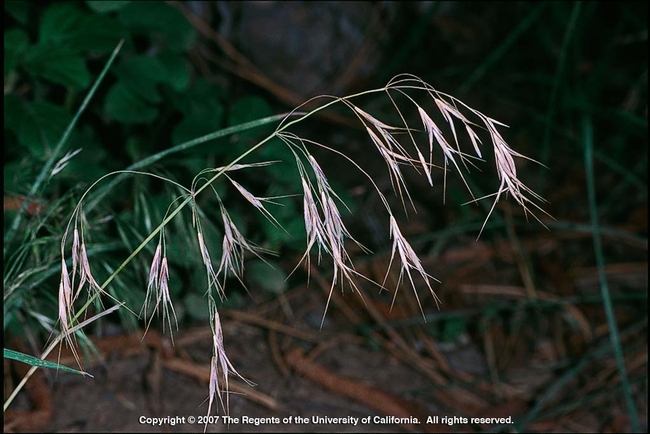Beat the Cheat!
Part I: Why cheatgrass is so very bad!
Each year, my number one garden task is working to get rid of all the cheatgrass that moves in. Cheatgrass (Bromus tectorum) is an aggressive invasive species that thrives in disturbed soils. How aggressive? Each plant produces between 25 and 5,000 seeds which remain viable in the soil for 2-3 years. Density of cheatgrass averages 600 plants per square foot and it is not uncommon for plants to produce two seed crops in one season. Can you do the math? These plants are prodigious!! And once established, cheatgrass communities can persist for decades.
Cheatgrass is found throughout California and is the dominant annual grass on sagebrush rangelands in the Owens Valley. If you live on the edge of the wildlands, cheatgrass seeds constantly blow onto your property and present a perennial problem no matter how carefully you weed your yard.
The reason cheatgrass is so very, very bad in the garden around your home is because it presents a great fire risk - igniting easily and spreading fire rapidly. Cheatgrass has a very fine structure, accumulates litter, and dries completely in early summer, becoming a highly flammable, often continuous fuel. Cheatgrass promotes more frequent fires by increasing the biomass and horizontal continuity of fine fuels and by allowing fire to spread across landscapes where fire was previously restricted to isolated patches. And because cheatgrass loves disturbed soils, wherever we leave our mark on the land, cheatgrass soon happily follows: lots that have been cleared for home construction, areas that have been cultivated and subsequently abandoned, plots with excessive livestock grazing, areas where the native overstory has been removed, and even repeated fires can interact, or act singly, to proliferate cheatgrass.
That's the bad news. But there is hope for our landscapes. Stay tuned for part two, how to get rid of cheatgrass!
For more information:
USDA and US Forest Service Fire Effects Information System (FEIS) -
https://www.fs.fed.us/database/feis/plants/graminoid/brotec/all.html
